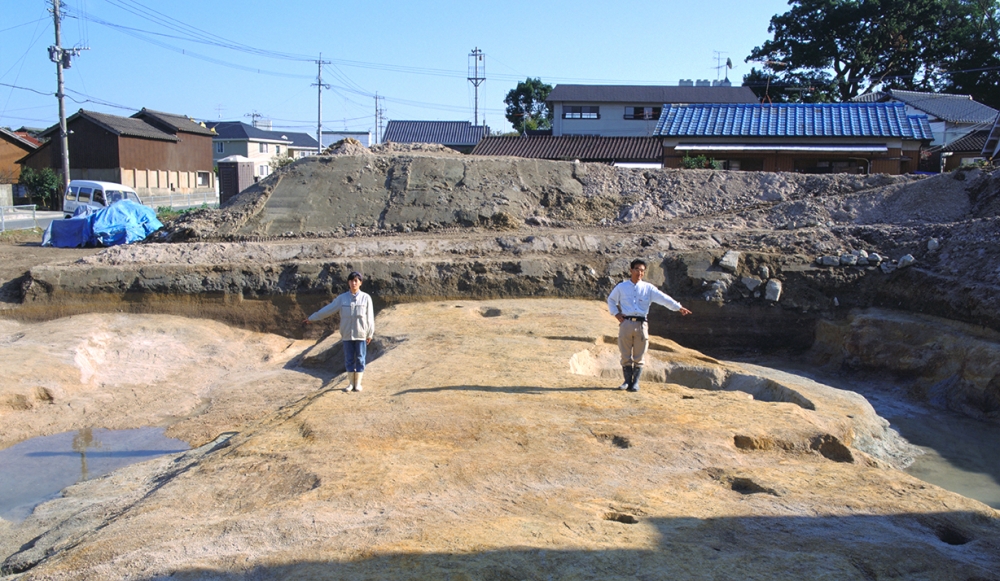Story-Composing Cultural Assets Kando (National Road)
Ruin of East Gate of Mizuki fortress (Kando East Gate Route)
These are the ruins of the East Gate of Mizuki fortress. There was a road connecting Hakata and Dazaifu, and was the final destination of “Sanyo-do road” from the capital to Dazaifu.
The highest ranking public servants who were sent from the Imperial Court were welcomed and were seen off by the public servants of Dazaifu.
More
Ruins of Mizuki fortress (East gate area)
Mizuki was a fortress built in the year 664 to protect the northwest of Dazaifu.
It’s like “The Great Wall” of China, and it consisted of a 60m wide outer moat, and rammed earth wall ramparts of about 1.2km long, about 80m wide and about 9m high. This structure combined with geographic features around the area prevented entry from outside.
Two gates located in the east and west were for meeting and parting with people who came and left Dazaifu and many stories were born here.
More
Kinukake Shrine
This shrine tells a legend of Sugawara no Michizane who was demoted and came down to Dazaifu in the year 901.
On arriving in Mizuki, Michizane changed his traveling clothes into new clothes and hung his traveling clothes on a pine tree and a rock on the side. This shrine worships that pine tree and rock.
At the side of the entrance, there is the remains of “Sugatami-no-i” pond. Michizane was feeling deep sorrow seeing his emaciated face reflected in the pond. It has been said that the water in the pond immediately became muddy and never became clear again.
More
Ruin of West Gate of Mizuki fortress (Kando West gate Route)
These are the ruins of the West Gate of Mizuki fortress. A road connecting Dazaifu and Tsukushi-no-murotsumi (Koro-kan) Guesthouse lead here.
There were streams of people such as foreign delegates and Japanese envoys and monks waiting for their ships sailing to the Tang and Silla dynasties.
More






These straight roads pass through the West Gate and East Gate of Mizuki, an entrance to Dazaifu. The West Gate route linked Tsukushi-no-murotsumi (the site of Korokan guesthouse) and Dazaifu, and was used by foreign delegations on their way to Dazaifu. The East Gate route connected to Hakata and was used by government officials assigned from the national capital. Both the West Gate and East Gate routes are now used as city roads.